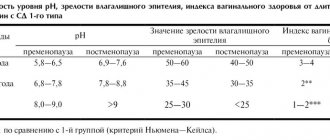Listeriosis
The incubation period for listeriosis can range from several days to one and a half months. The course of listeriosis can be acute, subacute, abortive, as well as chronic - recurrent. Cases of prolonged bacterial carriage without a pronounced clinical picture have been recorded. Most often, listeriosis occurs in an anginal-septic form. In this case, the main manifestations are symptoms of a sore throat, usually catarrhal or follicular, having a course similar to streptococcal sore throat. This form of listeriosis has a favorable prognosis and is cured in 5-7 days.
With the development of ulcerative film sore throat, accompanied by fever, the disease lasts 12-14 days with a favorable course, cough and runny nose may be noted, the tonsils are enlarged, sharply hyperemic and covered with films. Sore throat is usually accompanied by regional lymphadenitis. In some cases, listeria tonsillitis (both ulcerative-membranous and follicular) can progress to sepsis (most often in adults). In this case, severe relapsing fever, intoxication, and enlargement of the liver and spleen are noted. Various rashes may appear on the skin, and a white coating on the tonsils.
The nervous form of listeriosis occurs in the form of meningitis, meningoencephalitis or brain abscess. The clinical course of these conditions when affected by Listeria does not differ from that in the case of nonspecific bacterial damage to the central nervous system (meningeal symptoms - stiff neck: Brudzinsky and Kernig symptoms, signs of encephalitis, disorders of peripheral innervation - paresis and paralysis, polyradiculoneuritis, etc.) .
The rather rare ocular-glandular form of listeriosis usually develops in case of contact with a sick animal. It manifests itself in the form of conjunctivitis against the background of general symptoms (fever and intoxication) and enlarged lymph nodes (mainly cervical and parotid). When examining patients, swelling of the eyelids is noted, the palpebral fissure is narrowed, and there are complaints of deteriorating vision. Lymph nodes are enlarged and moderately painful on palpation. Listeriosis in this form usually lasts from a month to three.
In newborns (and fetuses with antenatal infection), listeriosis occurs in the septic-granulomatous form. Listeriosis in a pregnant woman can be asymptomatic or in an erased form, remaining unrecognized. As a result, intrauterine infection of the fetus occurs. In the early stages, it usually leads to termination of pregnancy or gross developmental anomalies. Listeriosis in newborns is extremely severe, with fever reaching critical levels, severe intoxication, vomiting, and diarrhea. The skin is cyanotic, and roseolous-papular rashes are noted. There are severe disturbances in breathing and heart rhythm. The spread of the purulent process to the meninges usually ends in death.
Listeriosis in infancy initially occurs as an acute respiratory viral infection, with hyperthermia and catarrhal symptoms, later developing into bronchopneumonia or pleurisy. In 15-20% of cases, after recovery, children continue to have dysfunction of the central nervous system and peripheral innervation. In some cases, the infection becomes chronic. The course of the chronic form is characterized by mild symptoms; patients may notice a short-term increase in body temperature, catarrhal symptoms, and dyspepsia. In some cases, symptoms of chronic pyelonephritis are detected.
Anginal-septic listeriosis can be complicated by endocarditis. Chronic listeriosis in persons with severe immune disorders can lead to generalization and severe sepsis.
What foods contain listeria?
The causative agent of listeriosis persists for a long time at low temperatures and sufficient humidity, multiplies at 4-6 ° C in soil, water and in some food products (meat, including those packaged in barrier films, fish, seafood, milk, vegetables and sauerkraut). The greatest dangers come from raw cabbage salads, soft cheeses and processed meats.
Storing food in the refrigerator does not kill the dangerous pathogen: listeria is often called the “refrigerator germ” because it is able to survive in these conditions. Listeria has another insidious property: the ability to multiply in pickles. If most microbes die under these conditions, then listeria can withstand table salt concentrations of up to 6-20%.
Listeria dies at boiling temperatures, and when exposed to sunlight, the causative agent of the disease will live no more than 15 days.
For whom is listeriosis especially dangerous?
Listeriosis is dangerous for elderly and senile people, patients with impaired immunity. This disease can also lead to a tragic pregnancy outcome. Despite the fact that pregnant women themselves usually manage to avoid damage to the central nervous system, the disease leads to the development of serious pathologies in the fetus, as well as stillbirth and premature birth. If the child is born alive, in some cases he may die within 2-3 days. If the fetus becomes infected during childbirth, severe meningitis or meningoencephalitis may develop.
Pregnancy and colds
With the onset of autumn, the incidence of ARVI increases sharply. But if for the majority of the population this fact does not pose a particular threat, then for pregnant women it is a risk of complications.
Why ARVI is serious
Many women, being pregnant, do not attach much importance to viral infections, with the possible exception of the flu.
At the same time, many other representatives of the “world of viruses” also have an “aggressive character,” including respiratory syncytial (RS), adeno-, rhino-, boca-, coronaviruses and parainfluenza.
Infection with one of them for a pregnant woman can result in:
- gestosis of varying severity - 87.3, recovered;
- kidney inflammation (pyelonephritis) – 10.4%;
- anemia – 90%;
- decrease in platelet level – 75%;
And for the fetus:
- development of feto-placental insufficiency - 62.9%;
- oxygen starvation of the fetus (hypoxia) – 45.2%;
- intrauterine growth retardation – 26.7%;
- intrauterine infections – 27.4%.
The thing is that viruses “happily” colonize the placenta, causing inflammatory disorders and damage of varying severity.
At the same time, viruses, due to their size, easily “pass” through the placental barrier directly to the fetus. And either “with impunity” they multiply in his still immature organs, causing developmental defects. Or (in later stages) they provoke inflammation and developmental delays.
Who's at risk
A physiological decrease in immunity in pregnant women already predisposes to prolongation of the infectious process and complications.
However, pregnant women with:
- overweight,
- diabetes mellitus,
- cardiovascular diseases,
- severe allergic reactions (bronchial asthma),
- thyroid diseases
- and autoimmune disorders.
An increased risk of complications also accompanies women with chronic diseases of the oropharynx of a bacterial nature (tonsillitis, pharyngitis and others). And also those suffering from anemia.
Diagnostics
As is known, the treatment of bacterial and viral diseases is fundamentally different.
A general blood test with a leukocyte formula will help resolve the issue of choosing a group of drugs.
The resulting increase in lymphocytes is a marker of the viral origin of symptoms, while the increase in neutrophils is a sign of a bacterial process.
You can find out which virus is the cause of the disease using a throat swab using the PCR method. True, the method is not designed to search for viruses in principle, but is used to exclude or confirm an already suspected pathogen.
For example, you can analyze for particularly dangerous types of influenza (swine, avian and others), or adenovirus.
And it is possible to carry out a comprehensive diagnosis in relation to several “seasonal” viruses at once (RS virus, adeno-, corona-, bocaviruses, parainfluenza pathogens). For example, in the “ARVI-screen” analysis format.
If suddenly a blood test indicates the bacterial nature of the inflammation, culture of a throat smear will help identify the pathogen and determine its sensitivity to antibiotics.
References
- Yushchuk, N.D., Vengerova, Yu.Ya. Infectious diseases: national guidelines. - M.: GEOTAR-Media, 2009. - P. 503–513.
- Zaitseva, E.A. System for the analysis of microbiological and molecular genetic markers for identifying highly virulent strains of Listeria monocytogenes: abstract. dis. Doctor of Medical Sciences, 2010. - 27 p.
- Duysenova, A.K., Dmitrovsky, A.M., Shopaeva, G.A. and others. Infectious diseases: modern realities. Health of Kazakhstan, 2016. - No. 01/44.
- Information collection of statistical and analytical materials. Infectious morbidity in the constituent entities of the Russian Federation in 2017-2018. Part 3. - M.: Federal Center for Hygiene and Epidemiology of Rospotrebnadzor, 2021. - 304 p.
- Khramov, M.V., Kostenko, Yu.G., Bataeva, I.V. Listeriosis: laboratory diagnostics in modern conditions: Proceedings of the II National Congress of Bacteriologists, 2021. - T. 6(3).
What else is prescribed with this study?
Listeria, DNA (Listeria monocytogenes, PCR) scraping, quality.
19.43. Scraping 1 day
430 ₽ Add to cart
Determination of pathogen sensitivity to antibacterial drugs (DDM)
01. 1 day
490 ₽ Add to cart
Determination of pathogen sensitivity to bacteriophages
03. 1 day
220 ₽ Add to cart
Determination of pathogen sensitivity to an expanded range of antibacterial drugs
02. 2 days
600 ₽ Add to cart
Determination of pathogen sensitivity to an expanded range of antibacterial drugs, with determination of the minimum inhibitory concentration (MIC, MIC)
13. 2 days
960 ₽ Add to cart
Determination of sensitivity to antibacterial drugs of ESBL strains
05. 1 day
320 ₽ Add to cart
Determination of sensitivity to antibacterial drugs of MRSA strains
06. 1 day
320 ₽ Add to cart
Determination of sensitivity to antibacterial drugs of the entire spectrum of isolated microflora
09. 1 day
320 ₽ Add to cart
How does listeriosis spread?
Listeriosis infection occurs:
- when eating raw or insufficiently heat-treated contaminated products of animal origin (dairy products, meat and poultry), vegetables, fruits and seafood;
- through inhalation of dust containing the pathogen;
- through contact with a sick animal (or with an animal carrying listeria);
- through the placenta or through contact of the newborn with the birth canal of the woman in labor;
- through contact of newborn children with infected care items and medical instruments in maternity hospitals.
Where is listeriosis common?
This infection occurs in many countries of the world with different socio-economic and climatic conditions. Between 1998 and 2008, outbreaks of food-borne listeriosis occurred in Finland (butter), the United States (breakfast meats) and France (soft cheeses and vacuum-packed prepared meat products). In recent years, this disease has been particularly common in European Union countries. Thus, since 2015, outbreaks of listeriosis have occurred several times in Austria, Great Britain, Denmark, Finland and Sweden. They were caused by contaminated frozen corn grown in Poland and packaged in Hungary. In May 2021, cases of listeriosis were identified in Sweden, possibly linked to consumption of packaged mashed potatoes. Another outbreak occurred in October 2021 in Switzerland, but its causes are unknown.
In the Republic of Belarus, the incidence of listeriosis has been at the level of isolated cases for many years.
State institution "Grodno Zonal Center for Hygiene and Epidemiology", 2019






